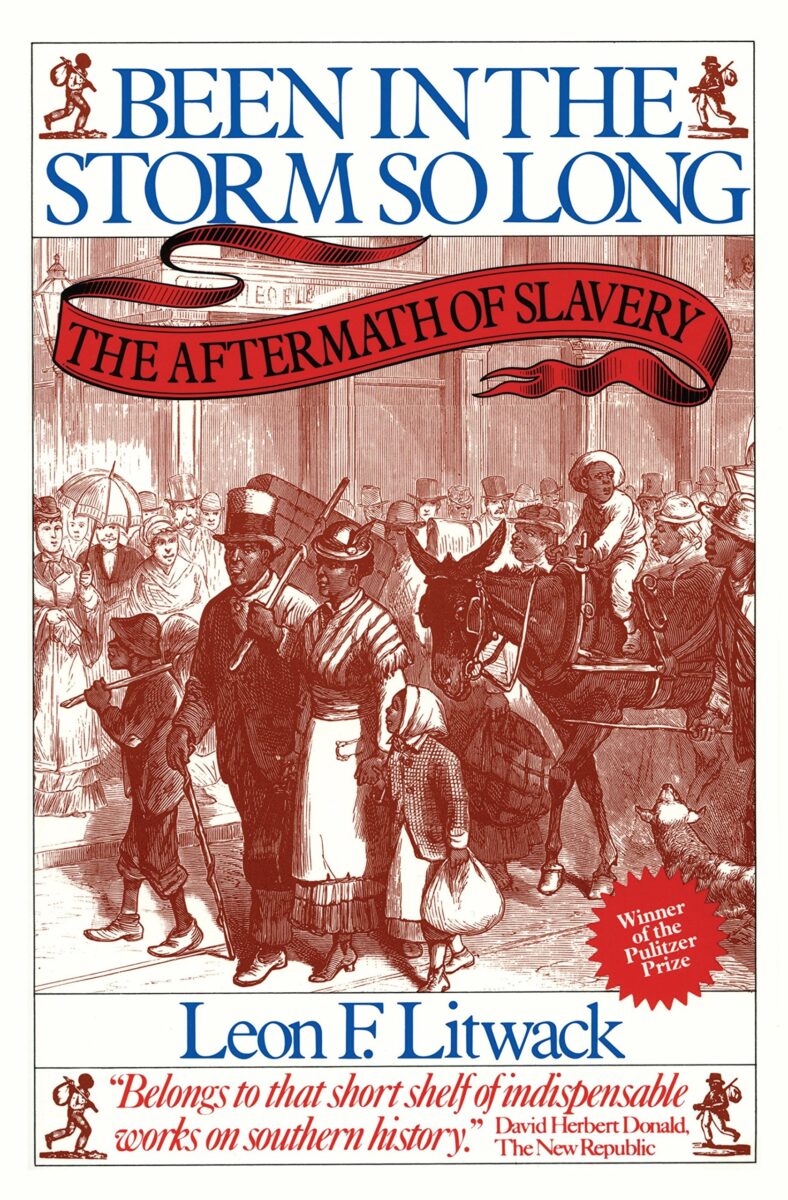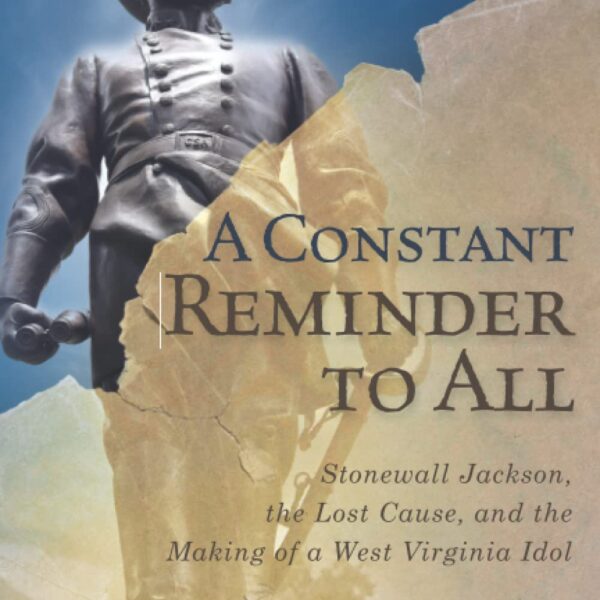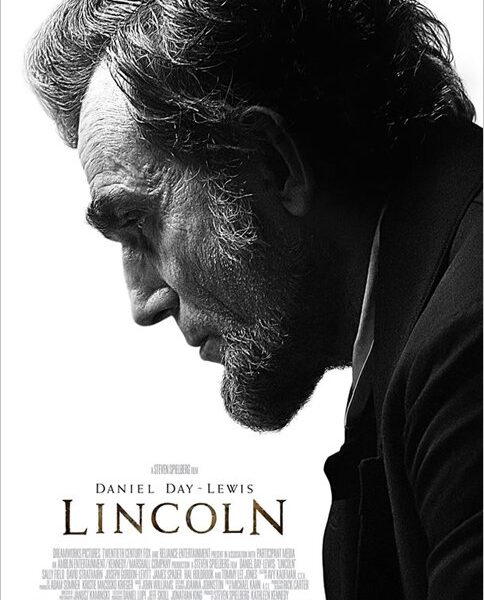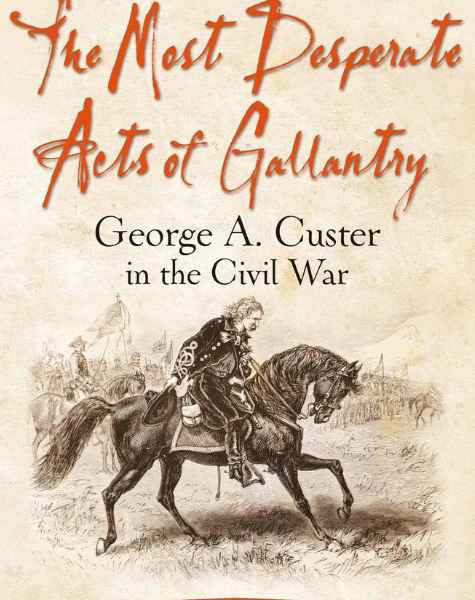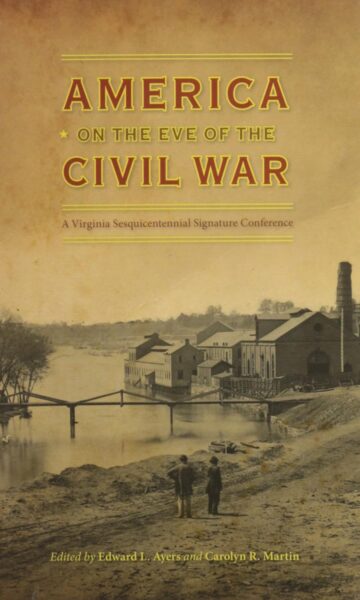On the one-year anniversary of the Pulitzer Prize winning scholar Leon F. Litwack’s death, historian Evan C. Jones offers this extended retrospective on Litwack’s magnum opus.
Throughout the nineteenth century, some four million enslaved African Americans passed news along what became known as the “grapevine telegraph.” Through this whispering back-channel of oral narratives, chattel bondpersons spread rumors and realizations of emancipation and freedom in the years before and after Appomattox, all done beyond the ear of vengeful white eavesdroppers. Perhaps no other book better tapped into the grapevine telegraph than Leon Litwack’s Been in the Storm So Long: The Aftermath of Slavery [1979]. This book, inspired by the Civil Rights struggles of the 1960’s and 70’s, secured Litwack a Pulitzer Prize and National Book Award. Yet, in conversation with Civil War and Reconstruction scholars today, mention of Storm often leads to the obligatory nod of praise and recognition at its prize-winning heft, followed by a metaphorical but permanent shelving of the work as pre-Foner and schmaltzy. Such disregard misses the work’s remarkable achievement as an unrivaled contribution to the “new social history.” By harnessing the voices of common enslaved persons turned freedpeople, Litwack expanded Reconstruction studies far beyond the boundaries established by W.E.B. Du Bois and John Hope Franklin and set a higher standard for all subsequent social history of the United States. He capsized two generations of racist Dunning School prattle from authors like Claude Bowers, E. Merton Coulter, Ulrich B. Phillips, and William A. Dunning (who gave this creed its name), and he recovered a hidden history of Reconstruction that others had thought was long lost to oblivion.
To understand the secret strengths of Been in the Storm So Long, one must look to the author’s intellectual origins. Leon Litwack was the product of the world that Kenneth Stampp made—a virtually unrivaled level of training and background attained at the UC Berkley history department of the 1960s. There, Professor Stampp produced a remarkable cadre of young historians, among them Janet Sharp Hermann, William Freehling, James Oakes, Daniel Walker Howe, Stephen Maizlish, William Gienapp, and a temporary exchange student from England named Richard Carwardine.
Although Stampp’s students comprise a who’s who of path-blazing scholars in the fields of slavery, emancipation, freedom, antebellum politics, and Civil War studies, even among this crowd, Litwack distinguished himself as one of the great humanities research trailblazers of his era. This is in part because most of his fellow graduate students traveled back into the antebellum South, whereas Litwack followed a road that led beyond Appomattox Court House. By venturing into Reconstruction studies, he stepped into the anti-Dunning School world dominated by the writings of W.E.B. Du Bois and John Hope Franklin. But where Du Bois and Franklin focused mostly on high politics and sources from the black political, religious and intellectual elite, Litwack embraced the “new social history” of the 1960s and ‘70s. In so doing, he took a history “from the bottom up” approach that included the illiterate and undistinguished. He undertook a decade-long odyssey that carried him to archives in nearly every corner of the former Confederacy and to points as far afield as a graveyard for black Union soldiers in Port Hudson, Louisiana. He assiduously examined interviews conducted by the Federal Writers’ Project during the Great Depression. In short, by rediscovering the words of common folk from within the emancipation generation, he recovered that the allegedly powerless Black South was, in reality, among the most influential forces to be reckoned with in United States history.
The book is organized into ten chapters, which generally follows a chronology beginning with the final months of antebellum slavery, carries beyond Fort Sumter to 1865, into the dark months of the post-Appomattox peace and ends with the election of November 1867. Briefly put, 10% of the book is antebellum, 20% is wartime, and 70% is post-Appomattox.
At the outset of Chapter 1 (ironically titled, “The Faithful Slave”), the brutal co-existence of masters and the enslaved is put on full display in all of its horror and coercive dependence. Amidst the recounting of homespun tatters and flogged flesh, one reads the voice of Delia Garlic, still haunted by the memories of “babies . . . snatched from dere mother’s breas’ an’ sold. . . . [Children] separated from sisters an’ brothers an’ never saw each other ag’in. Course dey cry, you think dey not cry when dey was sold lak cattle?” There too is Virginia woman Lulu Wilson, who accredited her blindness later in life to a female mistress rubbing granulated tobacco snuff in her eyes as punishment. What follows is the stomach-turning foreman’s lash, the rape of Black women by white masters, as well as the grotesque mutilation and killing of persons that were considered mere chattel.
Chapters 2 and 3 turn hard toward arguments of Black agency in the years after Fort Sumter. Enslaved southerners piloted Union army forays as guides, helped fugitive white POWs escape from prison camps, and served as informants on Confederate movements, earthwork placements, and troop strengths. Central to both chapters is the rise of the United States Colored Troop (USCT) regiments. What started out as a Janissary Corps, or Corps d’Afrique zouaves (reminiscent of French and British colonial units, intended only for an ancillary role), ended up becoming a formidable and incomparable addition to Union arms that turned the tide of war back in favor of Union victory. As the narrative takes shape, Litwack frames the Civil War as the most successful slave insurrection in world history. Litwack explores what subsequent historians call “self-emancipation,” a theme later famously expanded upon by scholars like Vincent Harding, Ira Berlin and David Williams. With the self-emancipation thesis as the foundational bedrock for chapters 2-3, Litwack displays the full ferocity of Black agency, coupled with the military help of Lincoln’s emancipation proclamation and its unmatched contribution toward ultimate rebel defeat. With each passing month, the Confederate war economy weakens as runaways leave plantations and swell into Union Army ranks to the tune of some 186,000 soldiers. In doing so, enslaved persons helped drag an indifferent Union war effort, kicking and screaming, into a fully motivated, post-1862 freedom fight to finally destroy American slavery once and for all. Litwack carefully examines the glacial speed with which northern lawmakers fulfilled this mission (failing to overturn the infamous Fugitive Slave Law until 1864, for example), and finally passing the 13th Amendment in the House of Representatives in January 1865. In subtle ways, Litwack also explores the differences between abolition and emancipation.
Carrying the narrative to the terrifying battlefield travails of USCT regiments, Litwack strikes a tone that has been echoed by every succeeding historian: that freedom was not given by white office holders, but instead was taken by Black freedom-fighters. The peril within which Blacks placed themselves was far greater than white bluecoats. Captured USCT soldiers foresaw only two possible fates: immediate execution (as fugitive slaves) or being sold back into slavery by Confederates. The cost in carnage for this play for freedom is closely surveyed amid both eyewitness experience and casualty figures.
Chapter 2, “Black Liberators,” yields several of the most vivid scenes in the book. Again and again, Confederate troops shoot down surrendered or wounded USCT men at Battery Wagner, South Carolina; at the Crater in Petersburg, Virginia; at Mark’s Mill and Poison Spring in Arkansas; and, perhaps most infamously, at Tennessee’s Fort Pillow. Yet even here, Litwack masterfully turns the narrative toward the ferocity of Black agency. When counter-attacking rebels at Jenkins Ferry, Arkansas, the 2nd Kansas Colored Infantry chanted “Remember Poison Spring!,” and at a Petersburg assault, Black soldiers offered the stentorian battle cry, “Remember Fort Pillow!” This outwardly endless reservoir of fearlessness came at a cost. Of the nearly 186,000 USCT soldiers who enlisted in Federal armies, approximately 68,178 were killed, wounded or captured. This constitutes a staggering 36.6% casualty rate—all of them accrued in only the latter half of the war!
Betwixt such slaughter and setbacks, Litwack also etches triumph. There is the mission of Harriet Tubman and John Brown protégé James Montgomery, leading Union gunboats and infantry to Combahee Landing, South Carolina, in their raid to liberate the enslaved, while also destroying the area’s Confederate war industry. There too is the distinguished defense of Milliken’s Bend, Louisiana, and other displays of battlefield grit that earned twenty-one Black soldiers and sailors the Medal of Honor for meritorious valor. Perhaps the central beauty of Litwack’s narrative is that he sketches the Black South as every bit as formidable as the Confederate masters that ruled for generations. And he makes clear that the emancipation generation was not controlled by events, but rather pushed the momentum of history just as much as Union armies or rebel leaders.
Chapter 3, “Kingdom Comin’,” follows the rising freedom war to a crescendo, ever closer toward the abrupt Confederate economic and military collapse. Here, Litwack sets sharp focus on the personal experience of Black southerners who seek to redress generations of tortuous punishments. In Fluvanna County, the Virginia enslaved man James Woodson led federal soldiers back to his former master, “and then stood by while the Yankees whipped his ex-owner.” When Black women, with fresh whipping wounds, turned up at a USCT camp, Private William Harris decided that some reciprocity was in order. He led a patrol of fellow Black soldiers back to the plantation where the recent beatings had taken place, only to find that it was none other than his former master (a Mr. Clayton) who bore responsibility for lashing the women. Harris and his colleagues immediately stripped, bound, and whipped Clayton, “bringing the blood from his loins at every stroke.” The federals then let the ladies step up and take turns whipping the man who, just days earlier, had mutilated them. When the master of the prominent Magnolia Plantation in Louisiana chastised his slaves that their freedom would be over his dead body, they simply erected gallows upon which to hang him. There too is vengeance taken out against vicious “drivers” (the foreman of gang-system slave crews). Freedmen often boasted to WPA interviewers about having found and killed their old drivers after the war. But Litwack argues that, “impressed with the leadership and knowledge of plantation operations exhibited by these drivers, Union officers viewed them as a crucial stabilizing factor in the transition to free labor and tried to bolster their authority, particularly on the larger plantations.” This statement typifies the violent and sometimes perplexing transition to the new forms of labor that constitute the rest of the book.
With the death of the Confederacy, chapters 4-10 turn to the promising and confusing landscape of what Litwack calls “the moral wilderness of the defeated Confederacy.” It examines themes related to the post-emancipation Black family, marriage, divorce, and vicissitudes of free labor in the early post-war era. The “reconstruction of black families” torn asunder on the antebellum auction block yields parents, spouses and children searching the countryside for sold-off kin after Appomattox. With freedom also came the independence of naming. Freedmen gave themselves new titles; “Uncle Daniel” became “Mr. Daniel” or “Sir.” Former slaves of prominent “F.F.V.’s” (First Families of Virginia), for example, seized such last names as Carter, Fitzhugh, or Randolph—or chose others that did not recall memories of cruelty. But with Black agency still in the fore, whites resorted to a frenzied, desperate, and murderous campaign of terror that lasted much longer than their failed rebellion.
For the remainder of the book, hopes for post-emancipation freedoms struggle to gain or retake ground against the ebb and flow of murder, madness, and chaos. On the usually triumphant and celebratory subject of Juneteenth in Texas, Litwack recovers a previously lost history. When enslaved persons in Harrison County were freed and protected by United States soldiers and their neighbors in Rusk County were not, the Sabine River border divide became a macabre killing brook between freedom and enslavement. Lynched freedmen were found hanging in trees along the Rusk shore, and the Sabine swept along the bodies of those who tried to swim to freedom and were gunned down by Rusk County whites.
Another jarring image is “Big Jim” McClain. This Virginia planter answered the insistence of his more than one hundred former slaves to recognize their freedom by firing his revolver at them from the porch of the Big House. “How many black men and women were beaten, flogged, mutilated and murdered in the first years of emancipation will never be known,” Litwack writes. “Nor could any accurate body count or statistical breakdown reveal the barbaric savagery and depravity that so frequently characterized the assaults made on freedmen in the name of restraining their savagery and depravity – the severed ears and entrails, the mutilated sex organs, the burnings at the stake, the forced drownings, the open display of skulls and severed limbs as trophies,” he continues. Equally shocking are the instances of suicide that are examined among whites. The reader observes despair for a South without bondage with slaveholder Billy Finnely, who returned from Appomattox only to cut his own throat. After detailing Finnely’s suicide note, Litwack observes simply: “he seemed unable to cope with [the] reality” of emancipation.”
Here among the toil of Reconstruction labor one finds a few worthy criticisms of the book. Although chapters 5-8 are replete with white USCT officers, Freedmen’s Bureau agents, and Provost Marshal officials siding with white planters and against former slaves and USCT enlisted men, Litwack does not explain this bizarre alliance. The reader is left to presuppose hints of a Beardian argument—that coerced Black labor was needed to economically jump-start the South’s postbellum economy and, in so doing, fulfill the selfish financial needs of the larger white America. In short, emancipation is partially abandoned the moment it is fulfilled, but done so without explanation. Similarly, there is the curious case of the Natchez planter who actively recruited from the ranks of a disbanding USCT regiment to restore a labor force to his plantation. Why an ex-rebel would want his fields filled with former Union soldiers is left to mystery. Moreover, as Litwack continually references whites’ omnipresent “specter of servile insurrection” and the specific dual “specters of Nat Turner and Santo Domingo,” neither evidence nor argument is wielded to explain why a massive plantation-led revolt did not take place during his 1860-1867 framework.
Although little historiography is presented, Storm’s dated patina shows when Litwack bothers to argue against Myrta Lockett Avary’s deeply racist 1906 book Dixie After the War. Avary erroneously argues that post-1865 USCT regiments repeatedly broke into homes to rape white women. “The rapist is a product of the [R]econstruction period,” writes Avary. “His chrysalis was a uniform; as a soldier he could force his way into private homes, bullying and insulting white women.” By this point in Litwack’s accounting, however, the reader is well familiar with the generations of Black women who were raped at the hands of white enslavers. Avary also maligns the newly realized Black religious freedom as “the voodooism of Africa.” In 1979 Litwack felt the need to dispel such Dunning School twaddle, but latter-day Reconstruction historians would likely not pause to acknowledge Avary’s bigoted monograph.
There is also at least one typo. In referring to the 246 years between “the first sons of Africa” landing on slave ships at Jamestown Island in 1619 and the final freedom of 1865, Litwack accidentally wrote “264” years. My final criticism is that, like almost any study of this era, the origins and first wartime political use of the term “Reconstruction” is not pinpointed and may forever remain a mystery.
Chapters 7-8 carry us through the labor crisis brought about by emancipation and the gradual turning back toward the old ways of coerced servitude. As Black southerners began to move about in search of economic opportunity, whites having to share sidewalks, streetcars and railcars quickly installed oppressive Black Codes and segregated the region’s transportation, schools and even hospitals. Initially, whites wanted to reinstitute slavery in one form or another, some looking to land Chinese or even Irish laborers if those of African ancestry would indeed remain free. Gradually, however, Black freedmen became sharecroppers. This did not end the violent struggles over the future of labor and black class distinctions.
With Chapter 8, the tide of labor turns back in favor of white elites. There is no better example of this than the siege of James Island, South Carolina. Even here, in a region made famous by historian Willie Lee Rose for its promise of free soil, federal troops dislodged freedmen from the new experimental farms. As Litwack writes, “The battle over restoration of the lands soon resembled a series of mopping-up operations, with the Freedmen’s Bureau and Federal troops always ready to guarantee the safety and property of the retuning [white] owners, and the blacks able to hold out only for so long against the dictates of the law and the force of an army.” But in 1866 the South Carolina rice industry teetered on the brink of collapse. For a moment (across about 50 pages), it looks as though blacks in the Deep South are winning the struggle over labor. They refuse to acquiesce to Freedmen’s Bureau demands, contest federal troops from entering their fields and dwellings and even gain control over key roads and river crossings, thereby stopping commerce. But those sharecroppers deemed uncooperative by white landowners were literally starved into submission. Terms like “colonization” (sending freedpersons to Africa) quickly turned into talk of “extermination” and “annihilation” with a kind of ethnic pogrom looming among the appalling possibilities of Reconstruction. The book thereby pitches the wild South in a still gloomier shade, where emancipated souls are free on paper only. Local constables and courts use the Black Codes to corral, control and kill freedmen with impunity.
Amidst the grinding crush of Black Codes, Litwack begins to echo W.E.B. Du Bois’s paradoxical siren call that “only murder makes men.” Litwack notes that the black South had the option of Saint Domingue at hand and had to choose “whether they intended to avenge bondage by turning emancipation into a racial bloodbath.” But Litwack further explains that “if they retaliated for the wrongs visited upon them and sought to punish their former masters, they” would’ve validated the stereotypically racist view of “their . . . savage natures.” In contrast, “if they refrained from violence and showed compassion for their former owners, they” too would be judged as possessing a “natural docility, slavish mentality, and inferiority as men.” Such statements remind the reader that the emancipation generation had no easy solutions, only difficult choices. “Except for the confiscation of land,” Litwack writes, “most freedmen saw little to gain by the punishment of ex-Confederate leaders. . . . [O]n the contrary, some feared that an aroused white populace would surely visit its rage on the most vulnerable targets – the newly freed slaves.” It is perhaps prophetic therefore, that this is exactly what happened in the rising counter-revolution, riots and race massacres that characterized the next decade of Reconstruction. But for themselves, Blacks take a different road. As the book gets nearer to Chapter 9, a tone of forgiveness toward whites takes shape. Elizabeth Keckley, a former servant to the Confederate president, offered one such public plea and implored: “even I, who was once a slave, who have been punished with the cruel lash, who have experienced the heart and soul tortures of a slave’s life, can say to Mr. Jefferson Davis, ‘Peace!, you have suffered! Go in Peace.’”
Chapter 9, “The Gospel and the Primer,” is a tour-de-horizon through Black religion and education throughout what Litwack calls “the moral wilderness of the defeated Confederacy.” With new Black churches came the first Black schools. This constitutes another upheaval for whites to resent, in a land where few poor whites could read or write. Even the mansion of the late John Tyler (former United States president turned Confederate congressman) in Hampton, Virginia, became a freedmen’s school. At the center of nearly every paragraph is the reemergence of the African Methodist Episcopal (AME) Church and other sects of Baptists and Anabaptists. Litwack goes into great detail revealing that white southerners saw the AME Church as perhaps the greatest threat to their political and economic future. For whites, Black meeting houses represented the civil ecology of Black rebellion against the old ways—a place where freedmen could organize and coordinate. As Litwack writes, “With the withdrawal of thousands of blacks from the white-dominated churches, the black church became the central and unifying institution in the postwar black community.” When whites saw this exodus from segregated pews empty of generations of black worshippers, the region became increasingly polarized. Litwack portrays this new post-emancipation revivalism as a kind of Third Great Awakening, except limited to the Black South. White reaction was hysteria, violence, and further accusations of “voodooism.” Litwack follows the AME Church’s triumphant return to Charleston and the cathedral of freedom known today as “Mother Emanuel” after “it had been banished some forty years earlier for complicity in the Denmark Vesey insurrection.”
Finally, 470 pages into the narrative we arrive at politics (the place where so many Reconstruction studies begin). Litwack notes that “Reverend Richard H. Cain established a political base in Charleston, where his Emanuel Church soon became ‘one of the strongest political organizations in the State,’” an influence that spread across the South through other AME Church congregations and helped give rise to such famous postbellum black elected officials as Mississippi Senator Hiram Revels and South Carolina Congressman Tunis Campbell. This tenor characterizes the rest of the book and the closing tenth chapter, wherein Black men attain the fleeting right to testify in court, sit in jury boxes, and vote in elections. In this clergy led rise of political freedoms, the North Carolina Freedmen Convention (planned and pulled off by the Raleigh AME Church) led to “duplicated” events in “nearly every ex-Confederate state.” But the anguish of the era never passes, as one South Carolina woman wrote, “Nobody that hasn’t experienced it knows anything about our suffering.” Still another Palmetto State voice balked that “the sea of the Revolution confounded good and evil; and, in the chaotic turbulence, all suffer in degree.” It is within this drift of uncertainty that Litwack ends the book.
The final paragraph closes in November 1867. Although there is not a single illustration in the book, Litwack’s final scene is visually unmistakable for any serious student of Reconstruction. His words sketch freedmen standing in line, waiting to cast their ballots in the critical election of November 16, 1867. In doing so, Litwack brings to life the famous Harper’s Weekly woodcut of “The First Vote.” For just a moment it seems that the 556-page narrative will gift the reader with a much-earned happy ending. Instead, Litwack offers an eerie warning, cautionary even for the United States of 2022. He writes, “election day in most of the South passed quietly – and with it, some mistakenly thought, the old political and social order.” This ending is as profound as it is haunting. At a time when voting rights are once again under siege, this admonishment (to paraphrase the reverend, Joseph Lowery) that, everything had changed and nothing had changed, is prescient. A counter-revolution ultimately reversed much of the ground gained in the early days after Appomattox. But for the first 500 pages of Litwack’s Storm, we see the fleeting flash that W.E.B. Du Bois described when “the slave went free [and] stood a brief moment in the sun.” Professor Eric Foner’s Reconstruction: America’s Unfinished Revolution, 1863-1877 broke further ground and has largely eclipsed Litwack, and yet every professional scholar, student or history buff must pass through Litwack’s Storm if they wish to come to terms with the raw, brutal and un-democratic dimensions of this era.
Leon Litwack died of bladder cancer on August 5, 2021, but Storm’s contribution to the field of African American social history will outlive us all. This book serves as a “grapevine telegraph” to our own time—and by so reestablishing that link, Litwack’s contribution will remain eternally gilded alongside the great works of Ira Berlin, W.E.B. Du Bois, John Hope Franklin, Eric Foner, Eugene Genovese, Vincent Harding, Thavolia Glymph, Armstead Robinson, and Carter G. Woodson. To reappropriate words from Robert Penn Warren, at the moment of its publication, Been in the Storm So Long entered upon immortality.
Evan C. Jones is the co-editor of Gateway to the Confederacy: New Perspectives on the Chickamauga and Chattanooga Campaigns, 1862-1863 (2014).
